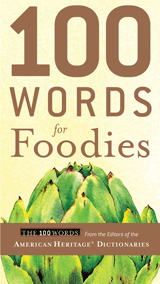
|
|
aioli amaranth arrabbiata baba gannouj bacalao bain-marie beignet bialy biryani blanch bruschetta bulgogi cardamom ceviche chaat challah chayote chiffonade chipotle choucroute cilantro couscous croque-monsieur dahl deglaze dim sum edamame emulsify epazote falafel farci fenugreek Florentine focaccia |
fufu gado gado galangal ganache garam masala garlic gazpacho gravlax gremolata haggis hamantasch hominy hoppin’ John induction cooking injera julienne junket kecap manis kibbeh kimchi lavash linguiça lovage macerate madeleine mandoline mezzaluna mezze mole mouthfeel nacho nopal nuoc mam orzo |
pawpaw pho piccata pierogi polenta ponzu poutine purslane quahog ramekin rissole rouille roux salsa sancocho shawarma soba souvlaki speck tagine tamale tatsoi teff tomalley umami vindaloo wasabi waterzooi xanthan gum yakitori yuca zabaglione |







